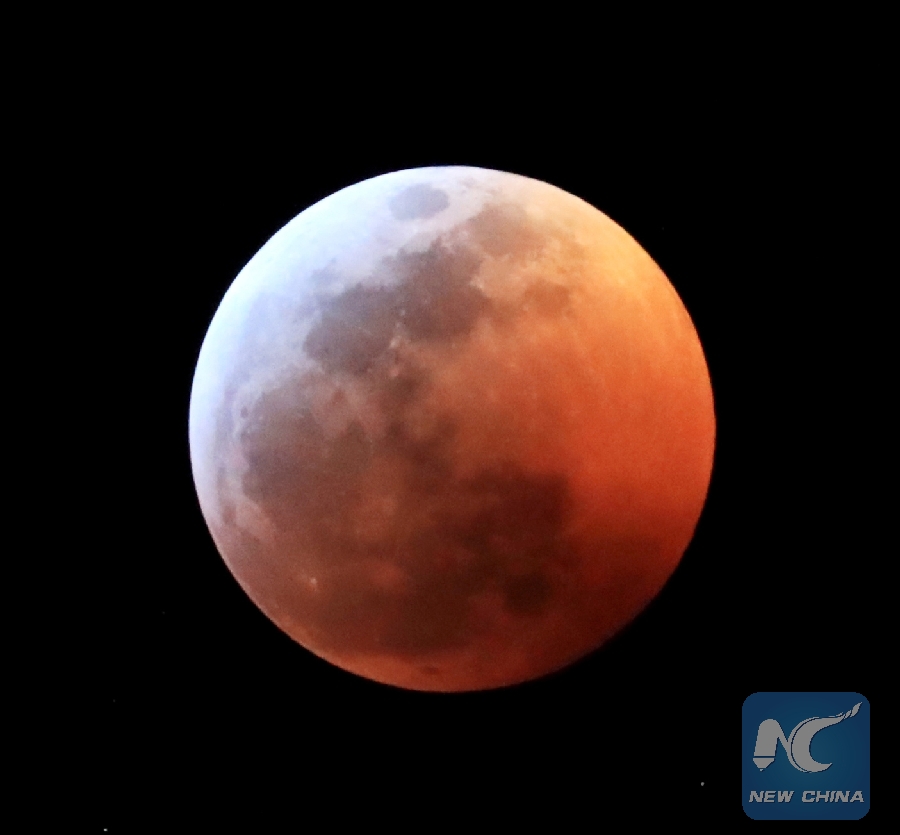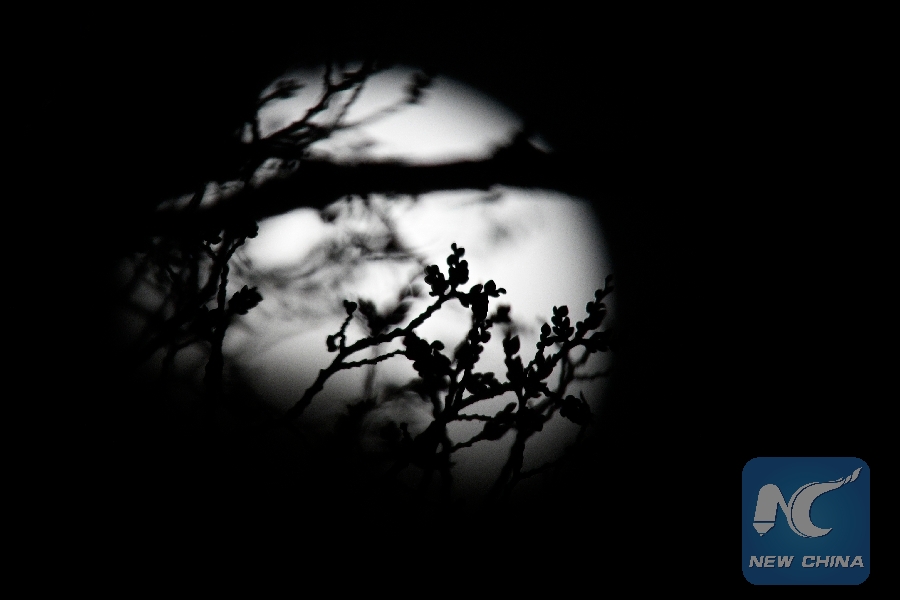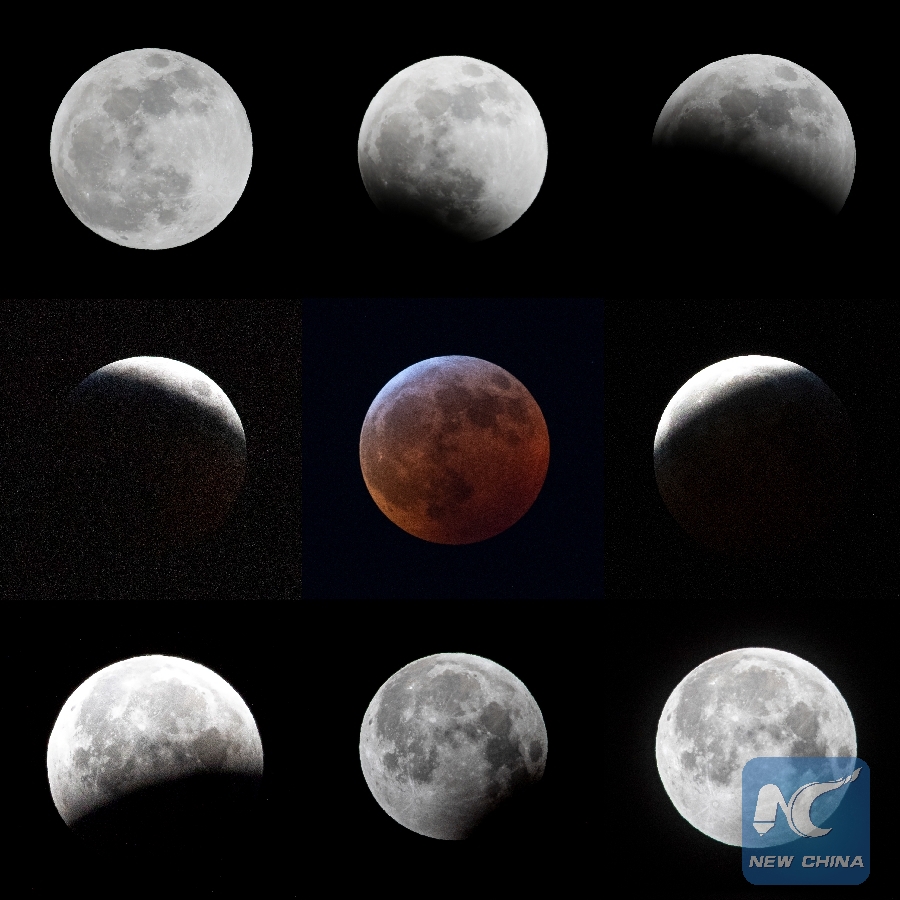
Photo taken on Jan. 20, 2019 shows the supermoon in Los Angeles, the United States. (Xinhua/Li Ying)
LOS ANGELES, Jan. 20 (Xinhua) -- Stargazers across California watched the full moon slip into the Earth's shadow during an eclipse on Sunday night.
The total lunar eclipse started with a partial phase at about 7:33 p.m. PST Sunday (0333 GMT, Monday) when the moon began to enter Earth's shadow, about 19 degrees above the eastern horizon.
At 8:41 p.m. PST (0441 GMT, Monday), the moon was completely inside the umbra, marking the beginning of the total lunar eclipse. The total process took about three hours.
The Griffith Observatory in Los Angeles and some universities held public viewing events Sunday night, attracting lots of astronomy enthusiasts.
Eclipse happens when the moon, Earth and the sun are lined up and on the same plane -- allowing for the moon to pass through Earths shadow.

The moon is seen during a lunar eclipse in Washington, the United States, on Jan. 20, 2019. (Xinhua/Liu Jie)
Lunar eclipses occur only during a full moon, and this one was particularly special because it was also a supermoon, which occurs when the moon is full and closest to Earth in orbit.

Combination photo taken on Jan. 20 and Jan. 21, 2019 shows the change of moon (from L to R and top to bottom) during a total lunar eclipse in the sky of New York, the United States. (Xinhua/Wang Ying)
Sunday's eclipse, visible in North and South America as well as parts of western Europe and Africa, was the first lunar eclipse in 2019 and the last total lunar eclipse until 2021.

